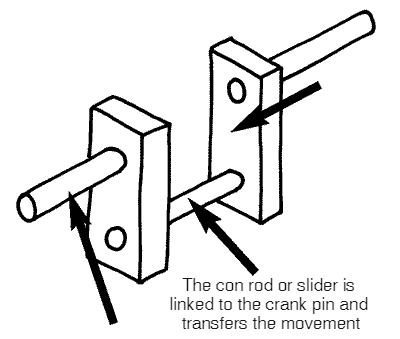|
Cranks are similar to a simple cam. They convert circular movement into a reciprocal one (up and down motion) or vice verse. How ever there are some fundamental differences. Firstly cranks only ever work in a circular motion and they only have one drive action per revolution. That said when it comes to automata you can make some amazing machines based on the crank.
|
The crank shaft both supports the crank and rotates it.
|
|
The crank has many uses. Firstly it is often the driving mechanism for hand operated automata. It is important to support the crank with some type of bearing. In this case it is the sides of the box that provide the support.
|
This crank will have a throw of 4cm. 2 x 2 = 4
The amount of up and down movement is called the throw of a crank, and is measured by the size of the circle it scribes when turning which
will be twice the diameter. |
Although the crank only works in a circular motion, its drive can be made to go from side to side as well as up and down (which can’t be achieved with a cam) and when applied to Automata you can create some very special effects.
Another big advantage with the crank is having power on both the upward and return strokes. This means you don’t have to rely on gravity which can be a problem with cams. |








